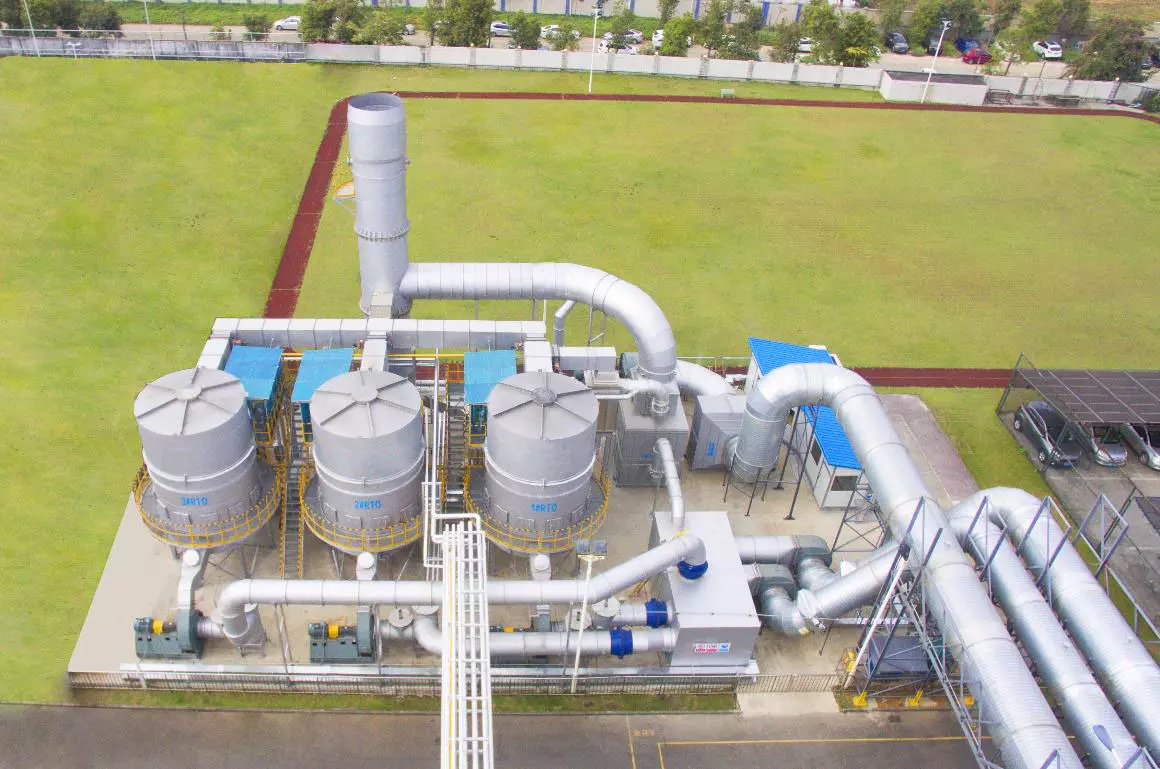RTO Thermal Oxidizer Alternatives
Introduction
In the realm of industrial air pollution control, regenerative thermal oxidizers (RTOs) have been widely used for their effectiveness in eliminating volatile organic compounds (VOCs) and hazardous air pollutants (HAPs). However, as industries evolve and environmental regulations become more stringent, exploring alternative solutions to RTOs has become imperative. This article will explore several alternative technologies that can serve as viable alternatives to RTO thermal oxidizers.
1. Catalytic Oxidizers
– Catalytic oxidizers offer a promising alternative to RTOs due to their lower operating temperatures, resulting in reduced energy consumption and operational costs.
– The catalytic process involves the use of a catalyst to promote the oxidation of VOCs and HAPs, enabling efficient pollutant removal.
– With advancements in catalyst technologies, catalytic oxidizers have proven to be highly effective in pollutant destruction, achieving high destruction efficiency rates of over 99%.
– Additionally, catalytic oxidizers have a smaller footprint compared to RTOs, making them suitable for industries with limited space availability.
– The use of precious metals, such as platinum and palladium, as catalysts enhances the conversion efficiency and longevity of the system.
2. Biofiltration
– Biofiltration systems provide a natural and sustainable alternative to RTOs, leveraging the power of microorganisms to degrade pollutants.
– These systems utilize a bed of organic material, such as compost or wood chips, to support the growth of microorganisms that biologically degrade VOCs and HAPs.
– Biofilters are highly effective in treating high air volumes with low to moderate concentrations of pollutants, making them suitable for various industrial applications.
– The key advantage of biofiltration is its ability to operate at lower temperatures, resulting in energy savings and reduced greenhouse gas emissions.
– Regular monitoring of the biofilter’s moisture content and pH levels is crucial to maintain optimal microbial activity and system performance.
3. Adsorption Systems
– Adsorption systems utilize activated carbon or other porous materials to remove VOCs and HAPs from industrial exhaust streams.
– These systems work on the principle of adsorption, where pollutants are physically trapped on the surface of the adsorbent material.
– Compared to RTOs, adsorption systems offer lower capital and operating costs, especially for applications with lower pollutant concentrations.
– Additionally, adsorption systems can be easily retrofitted into existing infrastructure, providing a cost-effective solution for industries seeking to upgrade their air pollution control systems.
– Regular replacement or regeneration of the adsorbent material is essential to maintain the system’s efficiency.
Заключение
As industries strive to meet stricter environmental regulations, exploring alternatives to Термичен окислител RTO
s becomes imperative. Catalytic oxidizers, biofiltration, and adsorption systems offer viable options with their unique advantages in terms of energy efficiency, sustainability, and cost-effectiveness. Selecting the most appropriate alternative depends on the specific requirements and operational conditions of each industry. By embracing these alternatives, industries can effectively mitigate air pollution while optimizing their operational efficiency.

Представяне на компанията
We are a high-tech enterprise that specializes in comprehensive treatment of volatile organic compounds (VOCs) in exhaust gas and carbon reduction energy-saving technology. Our core technologies include thermal energy, combustion, sealing, and automatic control. We have the ability to simulate temperature fields, air flow fields, and model calculations. We also have the ability to test the performance of ceramic heat storage materials, compare zeolite molecular sieve adsorption materials, and conduct high-temperature incineration and oxidation experiments for VOCs.
Our advantages lie in having an RTO technology research and development center and a waste gas carbon reduction engineering technology center in Xi’an, as well as a 30,000-square-meter production base in Yangling. We are a leading manufacturer of RTO equipment and zeolite molecular sieve rotary equipment in terms of production and sales worldwide. Our core technical team comes from the Aerospace Liquid Rocket Engine Research Institute (Aerospace Sixth Academy). We currently have more than 360 employees, including over 60 R&D technology backbone personnel. Among them, there are three senior engineers with the title of researcher, six senior engineers, and 189 thermodynamics doctors.
Our core products are the rotary valve heat storage oxidation incinerator (RTO) and the zeolite molecular sieve adsorption and concentration rotary. We can provide customers with comprehensive solutions for industrial waste gas treatment and energy utilization carbon reduction under various working conditions, combined with our own environmental protection and thermal energy system engineering technical expertise.
Certifications, Patents, and Honors
Our company has obtained various certifications and qualifications, including Knowledge Property Management System Certification, Quality Management System Certification, Environmental Management System Certification, Construction Enterprise Qualification, High-tech Enterprise, Rotary Valve Heat Storage Oxidation Furnace Rotary Valve Patent, Rotary Heat Storage Incineration Equipment Patent, and Disc-type Zeolite Rotary Patent, among others.

Избор на правилното RTO оборудване
- Determine the characteristics of the waste gas
- Understand the local regulations on emission standards
- Evaluate energy efficiency
- Consider operation and maintenance
- Budget and cost analysis
- Select the appropriate RTO type
- Consider environmental and safety factors
- Performance testing and verification
It is important to carefully explain each point before choosing the right RTO equipment. We must consider factors such as the characteristics of the waste gas, the environmental and safety concerns, and the efficiency of the equipment in order to make the best choice.

Our Service Process
- Consultation and Evaluation: Preliminary consultation, on-site inspection, and demand analysis
- Design and Plan Development: Plan design, simulation and modeling, and plan review
- Production and Manufacturing: Customized production, quality control, and factory testing
- Installation and Commissioning: On-site installation, commissioning and operation, and training services
- After-sales Support: Regular maintenance, technical support, and spare parts supply
Our one-stop solution provides customers with a customized RTO solution tailored to their needs. We have a professional team to provide comprehensive services, including consultation, design, production, installation, commissioning, and after-sales support.
Автор: Мия
